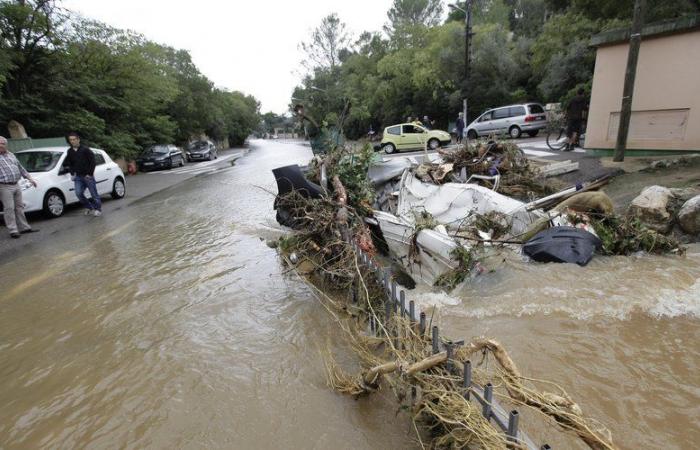
While floods caused more than 200 deaths in Spain on October 29, France has been working for two decades to deal with this type of bad weather. Example in Nîmes, hit hard in 1988, where we both carried out work and raised awareness among the populations. Claude de Girardi, elected representative of Nîmes Métropole for flood prevention, explains.
Midi Libre – MiKAEL ANISSET
What has changed in Nîmes between 1988, the year of the terrible floods which left 11 dead, and today?
First there was the very major work which consisted, initially, of making retention basins upstream (18 in total, Editor's note) but also expansion basins, downstream, to prevent our territory itself does not cause flooding further away. And, above all, there was the recalibration of the gifteaux, these underground structures which, at the end of the work in 2027, will multiply the flow capacity under the city tenfold. These are enormous, very expensive works (€228 million, Editor's note), which caused nuisance but which were well received by the population in view of the challenges. Beyond these projects, the first Papi (flood prevention action programs, editor's note) enabled the development of flood prevention plans, but also work on risk culture. Papi III, who runs until 2028, devotes 20% of its €123 million envelope to various actions in terms of raising citizen awareness, crisis management and reducing the vulnerability of homes and economic activities, with ambitious objectives.
What are these actions?
In terms of flood awareness, for example, we are working with schools. Over the year 2023-2024, 49 classes, or 8,200 students spread across the 39 municipalities which make up the public territorial basin establishment (EPTB) Vistre Vistrenque, thus benefited from 87 half-days of activities called “When the “water overflows” and designed by specialized service providers. And other information actions for the general public are carried out regularly. We also organize crisis management exercises, in order to verify, in each city, the relevance of the municipal plan of safeguard, which compiles a whole series of actions, instructions, precautions that must be put in place when a crisis occurs. This is, for example, how we install the cofferdams that protect homes and when; where a reception room is prepared for victims and shipwreck victims of the road; what traffic restrictions should be put in place; how we communicate with residents… All of this can be tested, in order to check if it was smooth, if there are points to improve.
Should these operations be repeated regularly?
Of course. 1988 was 35 years ago. People left, others arrived, there were births. There is obviously a collective memory of the event and those that followed, but it must be cultivated to nourish good reflexes.
And redevelop?
Indeed, it is a major operation to reduce vulnerability. For example, we have so-called “protected” operations. This consists of offering individuals, especially those located in flood zones, a diagnosis of their home or business premises. It is free and highlights points of vulnerability and, where applicable, recommendations for work. In this case, 80% of the amount is covered by the State. In Nîmes, the City and the Agglomeration supplement the remaining 20%, so that there is no remaining liability. However, only 20 to 25% of diagnoses result in work, so we are trying to remove the constraints to improve this ratio. This still represents a significant effort of €19 million per year already.
Was there also an awareness of urbanization to be reviewed?
On the ETPB Vistre Vistrenque, 100,000 of the 300,000 inhabitants are located in a flood zone. And two thirds are in Nîmes. On these areas, the PPRI (natural flood risk prevention plan) imposes very restrictive requirements. Some are not buildable and others are only if there is elevation or refuge areas. Furthermore, we are trying to link certain OPAHs (programmed operations for the improvement of housing) to work which also makes it possible to reduce the risk of flooding. This was done recently in the Richelieu district. As you can see, the work carried out on the retention basins and the reservoirs which should allow us to receive more water than in 1988 does not reduce our vigilance, quite the contrary. The climatic context imposes it on us.





